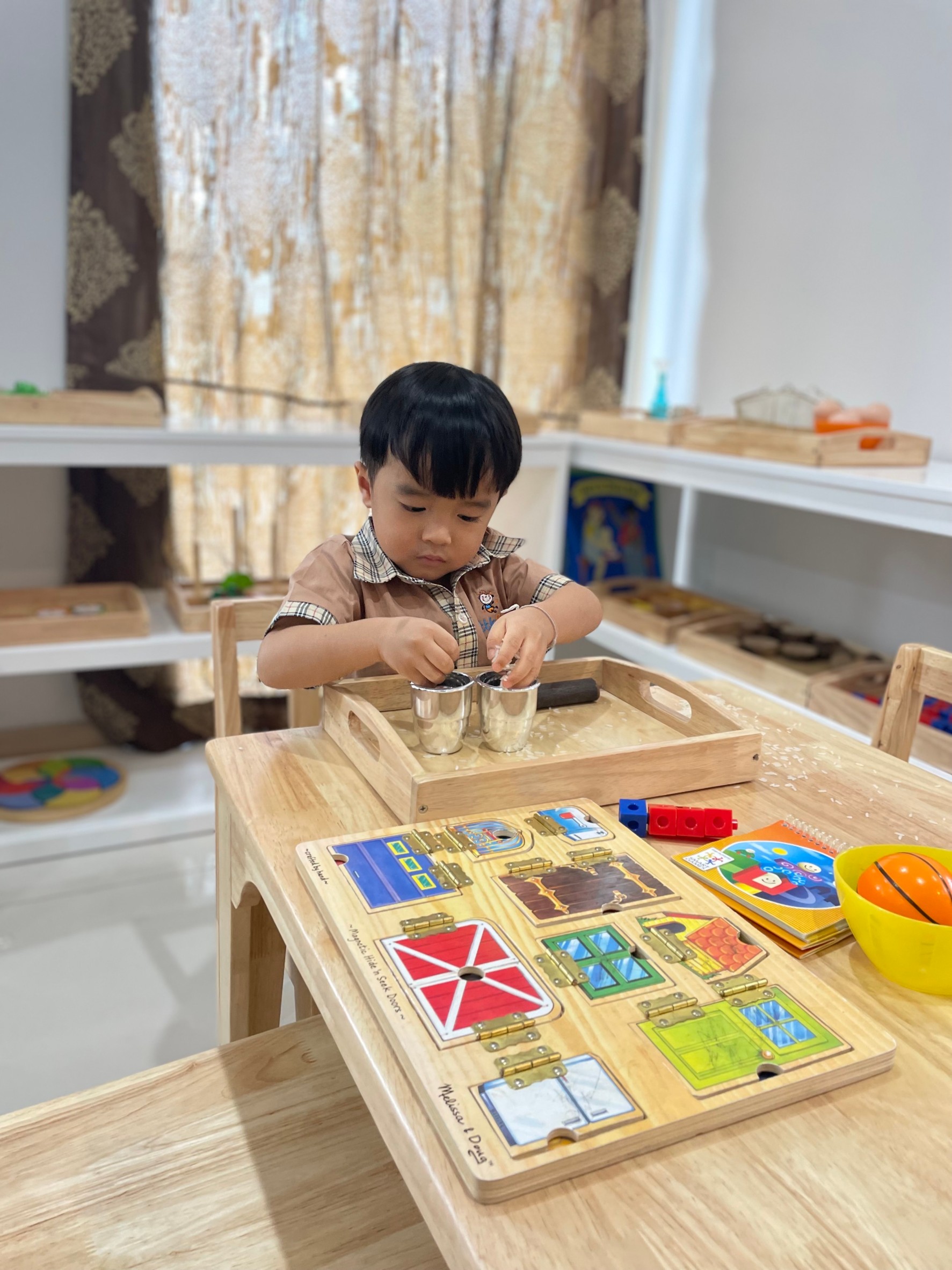Keywords: Montessori materials, sensorial education, practical life activities, math and language materials
Montessori education is distinguished by its unique approach to learning, characterized by the use of specialized materials and a curriculum designed to foster independence, hands-on learning, and critical thinking. In this blog post, we’ll explore some of the core components of Montessori materials and curriculum, highlighting how they contribute to a child’s development and understanding of the world.
The Role of Montessori Materials
Montessori materials are integral to the learning process. They are designed with specific educational goals in mind, providing children with opportunities to engage in self-directed, sensory-based learning experiences. These materials are carefully crafted to be visually appealing, durable, and engaging, encouraging children to explore and manipulate them to understand various concepts.
Sensorial Education: Engaging the Senses
Sensorial education is a foundational aspect of the Montessori curriculum, focusing on refining a child’s senses and helping them make sense of their environment. Materials in this category are designed to isolate specific sensory qualities—such as color, shape, size, texture, sound, and taste—to help children develop their perceptual abilities. Iconic Montessori sensorial materials include the Pink Tower, which helps children understand gradation and size relationships, and the Knobbed Cylinders, which promote visual discrimination and fine motor skills.
Practical Life Activities: Building Independence
Practical life activities are another cornerstone of the Montessori curriculum, designed to teach children essential life skills while fostering independence and concentration. These activities include pouring, spooning, buttoning, and tying, among others. By engaging in practical life activities, children develop hand-eye coordination, fine motor skills, and a sense of responsibility. They also gain confidence in their abilities to complete tasks independently, which translates into other areas of their education.
Math and Language Materials: Building Core Skills
Montessori math and language materials are designed to make abstract concepts concrete, allowing children to develop a deep understanding of foundational skills. In math, materials such as the Number Rods, Golden Beads, and Stamp Game provide hands-on experiences with numbers, operations, and place value. These materials promote a clear understanding of mathematical concepts and encourage critical thinking.
In language, Montessori materials focus on phonetics, reading, and writing. Sandpaper Letters help children associate sounds with symbols, while the Moveable Alphabet allows them to construct words and explore language creatively. These materials are designed to promote literacy in a way that is engaging and accessible for young learners.
Cultural Studies: Expanding Horizons
In addition to sensorial, practical life, math, and language activities, the Montessori curriculum includes cultural studies, which encompass geography, history, science, art, and music. Materials in this category encourage children to explore the world beyond the classroom and develop a broader understanding of different cultures, traditions, and concepts. The Montessori approach to cultural studies is holistic, emphasizing hands-on exploration and connections between various subjects.
Conclusion: A Holistic Approach to Learning
As we examine the unique materials and curriculum used in Montessori education, it becomes clear that they are designed to promote a holistic approach to learning. By engaging the senses, fostering independence, and providing hands-on experiences, Montessori materials and curriculum cultivate critical thinking, creativity, and a genuine love for learning.
In conclusion, the tools for success in Montessori education are carefully chosen to align with the developmental needs of children. They are more than just educational resources—they are catalysts for growth, exploration, and discovery. As we continue to celebrate the Montessori philosophy, let’s acknowledge the vital role that these materials and the curriculum play in shaping confident, curious, and capable individuals who are equipped to thrive in an ever-changing world.


No responses yet